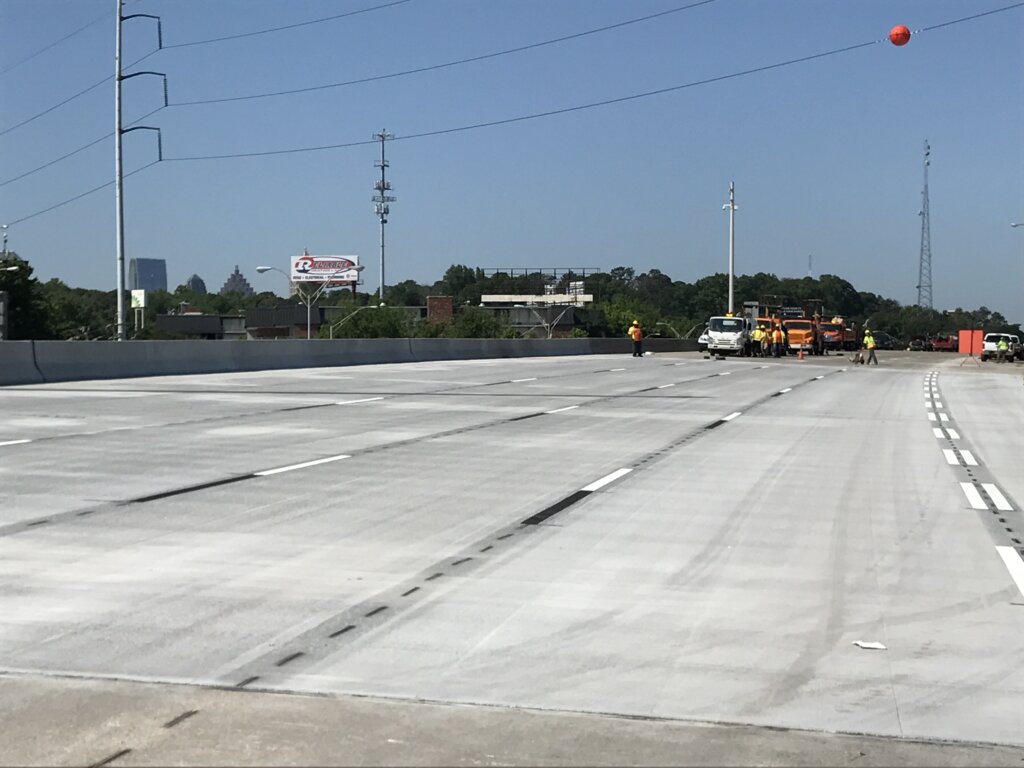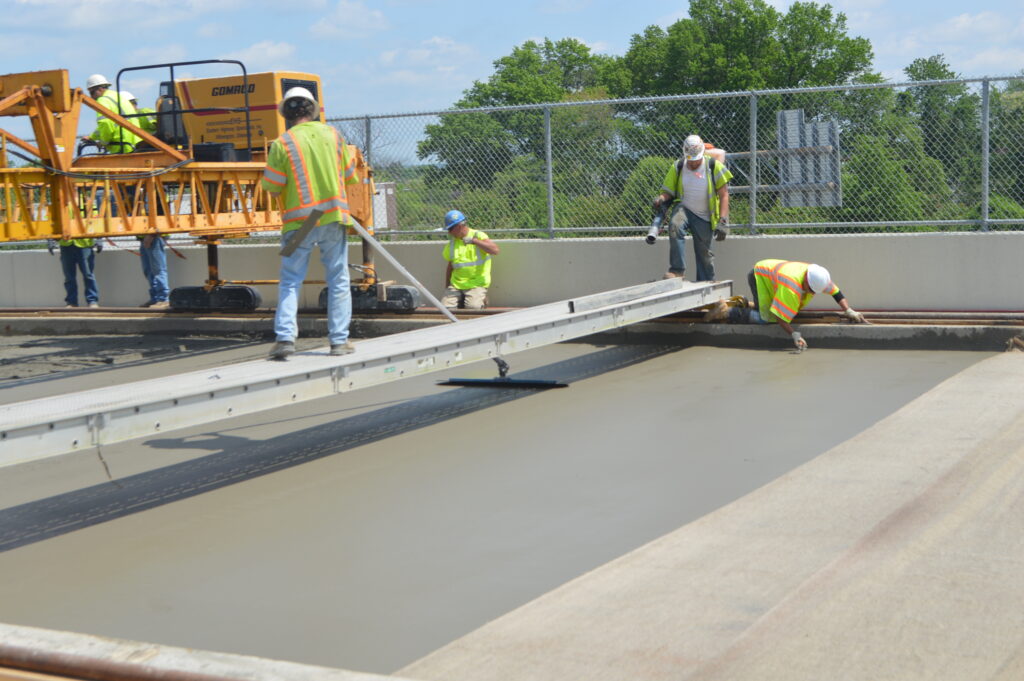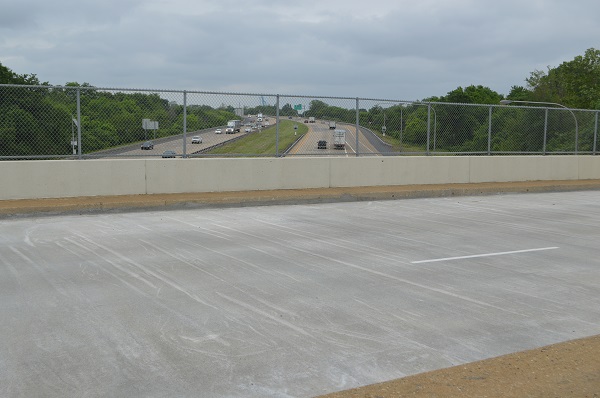Concrete Innovation Bridge Decks
A Pound of Crack Prevention Is Worth A Ton of Cure for Bridge Decks
There are currently over 15,000 federal highway bridges in the United States in need of repair, according to the U.S. Department of Transportation (DOT), and it is of major concern. Highway bridges are essential for commuters, freight transport, local economies, and public safety. The expected service life of a bridge is 50 years. According to the Report Card for America’s Infrastructure, there are more than 617,000 state and federal bridges across the U.S., and 42% are at least 50 years old.
The critical need to repair and modernize highway bridges is why the U.S. DOT launched the Bridge Replacement, Rehabilitation, Preservation, Protection, and Construction Program (Bridge Formula Program). Providing $26.5 billion to states, the District of Columbia and Puerto Rico over five years and $825 million for Tribal transportation facilities, it is the single largest dedicated bridge investment since the construction of the interstate highway system, according to U.S. Transportation Secretary Pete Buttigieg.
Repair and modernization of bridges mainly comes down to concrete cracking on bridge decks. Cracking creates stress on a bridge deck and allows water and salt ingress, leading to rust, crumbling, compromised structural integrity, and ongoing costly maintenance. Most concrete cracking is from shrinkage as the freshly poured concrete cures. Minimizing cracking from the start can not only reduce costs but extend the service life of a bridge deck significantly.
Cracking Occurs Within the First Week
The Wisconsin Department of Transportation sponsored a 2010 Wisconsin Highway Research Program Report, Concrete Cracking in New Bridge Decks and Overlays, under the premise that new bridge decks in the state of Wisconsin were developing early-age transverse cracks and map cracks in concrete overlays. The Marquette University Department of Civil & Environmental Engineering analyzed 15 bridge structures in the recently completed Marquette Interchange using 21 variables thought to cause early-age bridge deck cracking. Finite element simulations indicated that the normal traffic load by itself will not cause concrete deck cracking. However, tensile stress introduced by concrete shrinkage may cause transverse cracks as early as 4 to 8 days after pouring concrete.
The report’s recommendation to reduce shrinkage cracking included the use of simply supported bridge superstructures to reduce the tendency for early-age deck cracking; using mix designs that are known to have lower tendency for shrinkage, such as those with a lower amount of cement and relatively low cement/water ration; controlling the strength gain of the bridge deck concrete; and, if possible, providing a longer curing period before opening a bridge superstructure to traffic.
Concrete Innovation
The Marquette University recommendations, along with others from industry experts, associations, and reports, show the need for innovation in the concrete mixture itself. Not only are more government bridge projects looking to minimize closures by accelerating the construction timeline, but modern bridges are being built to last longer.
According to the industry manual provided by the American Association of State Highway Transportation Officials, new bridges are required to be designed with a 75-year service life as opposed to the 50-year service life of the past. It is important to note that current life cycle models used in the industry do not take concrete cracking into consideration, which leads to chemical, drying, or autogenous shrinkage. Instead, they calculate deterioration over time based on concrete as a continuous material.
One such concrete innovation is PREVent-C®, a magnesia-based admixture that mitigates shrinkage cracks and curling by leveraging two widely used technologies – expansive components and pore water surface tension reduction. It is proven that PREVent-C admixture technology reduces shrinkage cracks by more than 90 percent, depending on the mix design and the amount of PREVent-C utilized.
By successfully decreasing or eliminating cracks, bridge decks require less repair work, improved durability, and a better defense against ingress of water and chemicals. State and federal governments experience less headaches and an improved construction sequence.
PREVent-C can be used to prevent shrinkage cracking on any bridge deck application but is especially effective in two areas where governments are looking to drastically reduce timelines and costs: accelerated construction and thin bridge deck sections or overlays. Following are two of many examples:
Accelerated Construction Timelines
In late March of 2017, a large fire brought an Interstate 85 bridge to collapse in Atlanta, Georgia. As a result, it became a transportation crisis for commuters and local residents. The Georgia DOT decided on accelerated construction techniques due to the economic impact of the detour. PREVent-C technology was selected to be added to the concrete mix for the I-85 project to ensure an efficient construction timeline and a strong, effective bridge repair that would not require extensive and costly maintenance in the near future.
The Georgia DOT selected an accelerated mix and a 3-day curing period versus a more standard 7-day curing period. The selected mix design allowed for a shorter construction schedule leading to a much earlier than anticipated opening of the interstate. When accelerated strength and minimal curing are used, cracking would be visible immediately following the end of curing. When the curing was removed from the I-85 Bridge, there was no observance of cracking.
Thin Bridge Deck Sections and Overlays
The Rogers Road bridge over I-95 in Wilmington, Delaware, was around 40 years old in 2014 when the bridge deck was scheduled for maintenance to preserve structural integrity.
After evaluating the different bridge deck rehabilitation options, a mill-and-overlay repair was chosen. Overlays are an economical option compared to a full-depth replacement. However, overlays typically have a very high occurrence of shrinkage cracks due to the highly restrained condition of the underlying roughened surface combined with the thin 2” top section.
The shrinkage cracks can quickly lead to freeze-thaw deterioration and eventually delamination of the new surface, requiring additional maintenance as soon as the first couple of years after rehabilitation. In order to reduce the required future maintenance and try to preserve the original structure as much as possible with the overlay, PREVent-C500 shrinkage-reducing/compensating admixture was chosen to provide a dual-mechanism mitigation technology.
A sister bridge deck was rehabbed using the same method but without PREVent-C and a side-by-side comparison of cracking was performed to evaluate the effectiveness of PREVent-C. It was determined that the use of PREVent-C reduced shrinkage cracking by 85-90%.
Concrete is known to be prone to cracking, especially due to drying and autogenous shrinkage, leading to costly mitigation efforts and repairs of slabs and structures. Preventing cracks from the start is the long-term solution to bridge maintenance, integrity, and extended service life.
Put it to the Test
Order a sample of PREVent-C and schedule a trial mixture to evaluate its effectiveness on shrinkage cracking, as well as its effects on other fresh and hardened concrete properties. Or, send us your general questions about accelerated concrete construction. Contact PREVent-C experts today.






